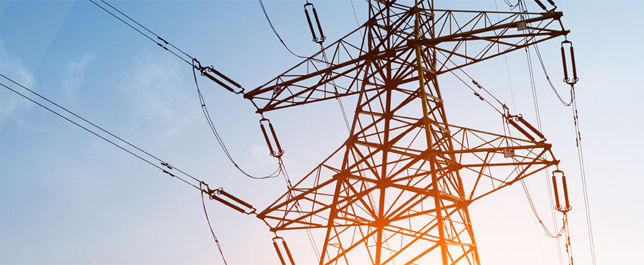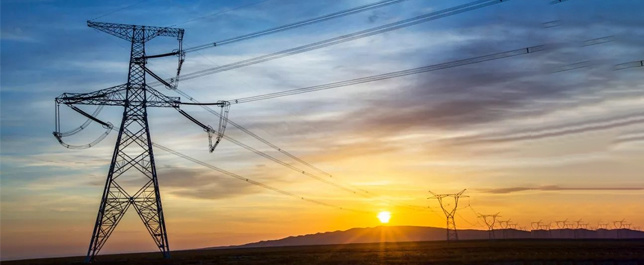News Center
Explore new technological breakthroughs and industry developments in our news.
Q&A on basic knowledge of insulators
Category: Company News
2020-04-15
What is the structure of the insulator? What is its function?
Answer: Insulators (commonly known as porcelain bottles) consist of two parts: porcelain and metal fittings, which are bonded together with cement adhesive in the middle. The porcelain part ensures good electrical insulation strength of the insulator, while the fittings are used to fix the insulator. The function of insulators is twofold: firstly, to firmly support and fix the current carrying conductor, and secondly, to form good insulation between the current carrying conductor and the ground.
It should have sufficient insulation strength and mechanical strength, as well as sufficient resistance to chemical impurities, and be able to adapt to changes in the surrounding atmosphere, such as the impact of temperature and humidity changes on itself.
The insulators used in substations and overhead lines include needle insulators, pillar insulators, porcelain cross arm insulators, and high-voltage wall bushings.
2. What is crawl distance? What is leakage distance ratio?
Answer: Climbing distance and leakage ratio distance are both external insulation parameters. The distance of discharge along the outer insulation surface is the leakage distance of electricity, also known as creepage distance, abbreviated as creepage distance. The leakage distance multiplied by the effective coefficient and then divided by the line voltage is the leakage specific distance, which is λ=KL/U in the equation: λ is the leakage ratio distance; K is the effective coefficient; L is the leakage distance; U is the line voltage.
3. What is surface discharge?
Answer: There are many suspension and pin insulators, transformer bushings, and wall bushings in the power system, many of which are located in the air. When the voltage of these devices reaches a certain value, the air on the surface of these ceramic devices discharges, which is called surface discharge along the solid dielectric, abbreviated as surface discharge. When surface discharge penetrates between the two poles, surface flashover is formed. The discharge voltage along the surface is lower than that in air. The uniformity of the discharge voltage and electric field along the surface, the surface state of the solid medium, and meteorological conditions are related.
4. What is flashover? What is the cause of pollution flash?
Answer: The phenomenon of discharge along the surface of solid insulation when the gas or liquid dielectric around the solid insulation is broken down is called flashover.
There are many industrial pollution particles on the surface of porcelain insulators in dirty areas. These pollution particles will form a conductive liquid film on the porcelain surface when wet, which significantly reduces the withstand voltage of porcelain insulation and makes the flashover voltage very low. This is the reason why porcelain insulation is prone to flashover under dirty and wet conditions. Pollution and moisture are necessary conditions for pollution flashover, and porcelain insulation that is only dirty but not wet will not cause flashover.
5. How to prevent insulator pollution flashover in substations?
Answer: (1) Increase basic insulation. If the number of insulators is increased, the distance of surface discharge is increased, and the leakage ratio distance meets the pollution classification requirements.
(2) Strengthen cleaning. The porcelain insulation in dirty areas must be regularly cleaned to maintain the surface cleanliness of the porcelain insulation and prevent pollution flashover. Electric water flushing is an effective method.
(3) Use dust-proof coating. When the effective leakage distance of ceramic insulation in dirty areas cannot meet the requirements and the cleaning workload needs to be reduced, methods such as applying silicone oil and floor wax are often used to increase the flashover voltage and prevent flashover accidents.
(4) We use semiconductor sleeve insulators and silicone rubber insulators.
Why is the surface of porcelain insulators made into a corrugated shape?
Answer: (1) Extending the arc crawling length can increase the arc crawling distance within the same effective height, and each one can also serve to block the arc.
(2) In rainy weather, it can block the flow of water and prevent sewage from directly flowing from the top to the bottom of the porcelain bottle, in order to avoid becoming a flying object and causing confusion.
(3) When the dust falls onto the corrugated ceramic insulator, the distribution is uneven, which to some extent ensures the strength resistance of the ceramic bottle.
Under what circumstances are porcelain insulators prone to damage?
Answer: (1) The installation and use of porcelain insulators are unreasonable, such as mechanical loads exceeding regulations, voltage levels not meeting requirements, improper installation positions, etc.
(2) Due to sudden cold and hot weather, as well as external damage from hail.
(3) Flashing caused by pollution of porcelain insulators during thunderstorms and foggy weather.
(4) Short circuit of electrical equipment, damage to porcelain insulators caused by excessive electrical and mechanical stress.
What are the consequences of cracks in insulator castings and bonding areas?
Answer: After cracks occur in the iron valve flange and adhesive layer, the sealing performance of the electrical appliance may decrease, which may cause moisture and water ingress into the oil injection equipment and damage to the internal insulation. In severe cases, it may lead to equipment explosion accidents. Cracks in the cast iron flange of the isolation switch or busbar support insulator may cause the support to detach from the insulator, leading to equipment malfunction and potentially causing the insulator to collapse or fall, resulting in a short circuit accident.
Why is there one more tension insulator string than a regular line?
Answer: Operating experience has shown that tension insulator strings are prone to deterioration due to high mechanical loads, and there are more opportunities for zero value insulator strings than suspension strings. Therefore, the number of reserved insulators should be one more than that of straight string insulators.
Related information
2020-04-15
2020-04-15
2020-04-15
SAF Coolest v1.2 设置面板 BBRSX-ZJJQ-TDSQE-XAD
无数据提示
Sorry,There is currently no content in the current column!
You can view other columns or return to!






 赣公网安备36032302000062号
赣公网安备36032302000062号